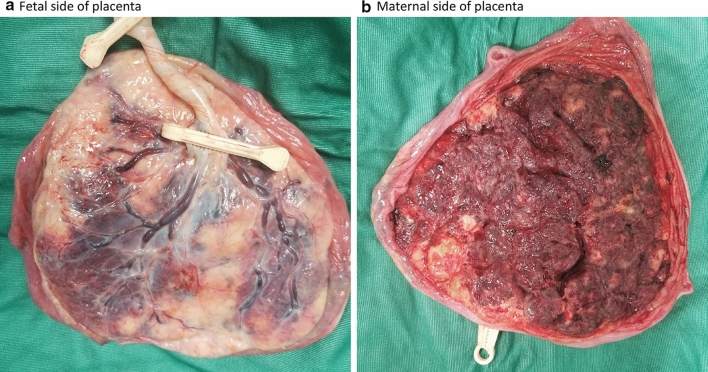A previously healthy 29-year-old G1 was admitted to the Intensive Care Unit at 29 + 5 with severe thrombocytopenia and respiratory compromise resulting from SARS-CoV-2 infection. Ultrasound showed fetal growth at the 14th percentile with normal fluid and Dopplers.
At 32 + 4, ultrasound demonstrated an almost complete growth arrest, with less than 100 g of growth in 3 weeks, measurements at the 6th percentile, and absent end-diastolic velocity (AEDV) in the umbilical artery. The patient was admitted for corticosteroids and fetal monitoring. Labour was induced at 34 weeks for AEDV and oligohydramnios and resulted in a vaginal birth of a male infant weighing 1559 g (4th percentile).
The placenta appeared grossly abnormal (Fig. 1) with 60% of the fetal surface demonstrating evidence of infarction and fetal vascular malperfusion. This case is a dramatic presentation of arrested fetal growth related to placental vascular pathology. Fetal growth and well-being should be monitored following SARS-CoV-2 infection.
Fig. 1.
Placenta demonstrating gross infarction following maternal SARS-CoV-2 infection
Author contributions
SM: manuscript writing/editing, BV: manuscript writing/editing, HB: manuscript writing/editing.
Declarations
Conflict of interest
The authors have no conflicts of interest to declare.
Footnotes
Publisher's Note
Springer Nature remains neutral with regard to jurisdictional claims in published maps and institutional affiliations.



